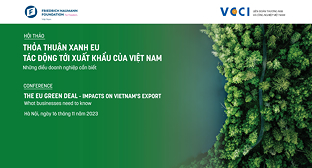The Use of Antidumping in Brazil, China, India and South Africa – Rules, Trends and Causes
12/12/2007 12:00
Author: National Board of Trade, Sweden
The use of antidumping has increased since the formation of the World Trade Organisation (WTO) in 1995. A novelty in this context is that developing countries have overtaken the traditional developed country users, such as the EU and the US, as the largest users. This new development leads to interesting questions particularly with respect to the use of the antidumping instrument by large developing countries. Why have these countries started using the antidumping instrument? What principles do they follow? Are they likely to continue using the instrument? What countries are the main targets? These are questions that this paper seeks to address. The purpose of this study is to investigate the underlying reasons for the increased used of antidumping. For the purpose of this study four developing countries, Brazil, China, India and South Africa, have been selected for case study. These have been chosen because they are large economies in their respective parts of the world, and because they are, in general, both large users and significant targets of antidumping.
This paper is arranged as follows. The first chapter maps the use of the antidumping instrument since 1995, and describes the general trends. The following four chapters outline the use of antidumping, as well as the administrative setup, in the four developing countries chosen for case study. All four case studies follow a similar set up. Firstly the general trade policy is discussed, followed by description of the countries’ use of antidumping. The use of antidumping is discussed both from the importing country perspective (what industries are petitioning, how are measures decided, who investigates etc.) and from the exporting country perspective (how is dumping determined, against who and against what products). Chapter 7 examines the possibility for special and differential treatment of developing countries within the framework of the antidumping agreement. The final chapter compares the four case studies and draws some general conclusions.
This paper has been prepared by the National Board of Trade with contributions to the four case studies written by Dr. Welber Barral and Gilvan Brogini (Brazil), Dr. Aradhna Aggarwal (India), Krista Lucenti (Switzerland), and Dr. Colin McCarthy (South Africa). The responsibility for the final text rests solely with the National Board of Trade.
The use of antidumping has increased since the formation of the World Trade Organisation (WTO) in 1995. A novelty in this context is that developing countries have overtaken the traditional developed country users, such as the EU and the US, as the largest users. This new development leads to interesting questions particularly with respect to the use of the antidumping instrument by large developing countries. Why have these countries started using the antidumping instrument? What principles do they follow? Are they likely to continue using the instrument? What countries are the main targets? These are questions that this paper seeks to address. The purpose of this study is to investigate the underlying reasons for the increased used of antidumping. For the purpose of this study four developing countries, Brazil, China, India and South Africa, have been selected for case study. These have been chosen because they are large economies in their respective parts of the world, and because they are, in general, both large users and significant targets of antidumping.
This paper is arranged as follows. The first chapter maps the use of the antidumping instrument since 1995, and describes the general trends. The following four chapters outline the use of antidumping, as well as the administrative setup, in the four developing countries chosen for case study. All four case studies follow a similar set up. Firstly the general trade policy is discussed, followed by description of the countries’ use of antidumping. The use of antidumping is discussed both from the importing country perspective (what industries are petitioning, how are measures decided, who investigates etc.) and from the exporting country perspective (how is dumping determined, against who and against what products). Chapter 7 examines the possibility for special and differential treatment of developing countries within the framework of the antidumping agreement. The final chapter compares the four case studies and draws some general conclusions.
This paper has been prepared by the National Board of Trade with contributions to the four case studies written by Dr. Welber Barral and Gilvan Brogini (Brazil), Dr. Aradhna Aggarwal (India), Krista Lucenti (Switzerland), and Dr. Colin McCarthy (South Africa). The responsibility for the final text rests solely with the National Board of Trade.
Các tin khác
- The Dispute Settlement Crisis in the World Trade Organization: Causes and Cures (16/03/2018)
- Modification of trade defence rules regarding non-market economy costs and prices (23/02/2018)
- Research Paper: Options for Disciplining the Use of Trade Remedies in Clean Energy Technologies (03/08/2017)
- Addressing the rise of Trade Remedies against Environmental Goods (03/08/2017)
- Anti-dumping Retaliation - —A Common Threat to International Trade (15/11/2016)
 Home
Home
 About Us
About Us




















